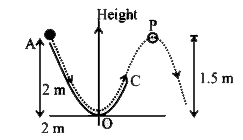Assertion : O2 is paramagnetic.
Reason : It has one unpaired electron.
If both assertion and reason are true and reason is the correct explanation of assertion.
If both assertion and reason are true but reason is not the correct explanation of assertion.
If assertion is true but reason is false
If both assertion and reason are false.
To solve the question regarding the assertion and reason about O₂ being paramagnetic and having unpaired electrons, we can follow these steps:
Step 1: Understand the Assertion
The assertion states that O₂ is paramagnetic. This means that O₂ has unpaired electrons, which is a characteristic of paramagnetic substances.
Hint: Recall the definition of paramagnetism and how it relates to electron configuration.
Step 2: Determine the Electron Configuration of O₂
Oxygen (O) has an atomic number of 8, which means each oxygen atom has 8 electrons. Therefore, O₂ has a total of 16 electrons. We will use Molecular Orbital Theory (MOT) to determine the electron configuration of O₂.
Hint: Remember the order of filling molecular orbitals for diatomic molecules.
Step 3: Fill the Molecular Orbitals
Using MOT, the molecular orbital configuration for O₂ can be written as:
- σ1s² (2 electrons)
- σ1s² (2 electrons)
- σ2s² (2 electrons)
- σ*2s² (2 electrons)
- σ2p z² (2 electrons)
- π2p x² (2 electrons)
- π2p y² (2 electrons)
- π*2p x¹ (1 electron)
- π*2p y¹ (1 electron)
Thus, the complete configuration is:
σ1s² σ1s² σ2s² σ*2s² σ2p z² π2p x² π2p y² π*2p x¹ π*2p y¹.
Hint: Pay attention to the filling order of the molecular orbitals and note where the unpaired electrons are located.
Step 4: Identify Unpaired Electrons
From the configuration, we see that O₂ has two unpaired electrons in the π*2p orbitals (π*2p x¹ and π*2p y¹).
Hint: Count the number of unpaired electrons in the molecular orbital diagram to confirm paramagnetism.
Step 5: Evaluate the Reason
The reason states that O₂ has one unpaired electron. However, we found that O₂ actually has two unpaired electrons.
Hint: Compare the number of unpaired electrons found in the previous step with the statement in the reason.
Conclusion
- The assertion that O₂ is paramagnetic is true.
- The reason that it has one unpaired electron is false because it has two unpaired electrons.
Thus, the correct answer is that the assertion is true, but the reason is false.
Final Answer: Assertion is true, Reason is false.
The assertion states that O₂ is paramagnetic. This means that O₂ has unpaired electrons, which is a characteristic of paramagnetic substances.
Oxygen (O) has an atomic number of 8, which means each oxygen atom has 8 electrons. Therefore, O₂ has a total of 16 electrons. We will use Molecular Orbital Theory (MOT) to determine the electron configuration of O₂.
Using MOT, the molecular orbital configuration for O₂ can be written as:
- σ1s² (2 electrons)
- σ1s² (2 electrons)
- σ2s² (2 electrons)
- σ*2s² (2 electrons)
- σ2p z² (2 electrons)
- π2p x² (2 electrons)
- π2p y² (2 electrons)
- π*2p x¹ (1 electron)
- π*2p y¹ (1 electron)
σ1s² σ1s² σ2s² σ*2s² σ2p z² π2p x² π2p y² π*2p x¹ π*2p y¹.
From the configuration, we see that O₂ has two unpaired electrons in the π*2p orbitals (π*2p x¹ and π*2p y¹).
The reason states that O₂ has one unpaired electron. However, we found that O₂ actually has two unpaired electrons.
- The assertion that O₂ is paramagnetic is true.
- The reason that it has one unpaired electron is false because it has two unpaired electrons.
Similar Questions
Knowledge Check
[FeF6]3− is paramagnetic due to presence of unpaired electrons in the complex . The five electrons remain unpaired because
Afluorine is the most electronegative elementBF− is a weak field ligand hence does not cause pairing of electronsCF− is a strong field ligand hence does not cause pairing of electronDpairing does not take place in iron complexes .
A particle (m = 3 kg) slides down a frictionless track (AOC) starting from rest at a point A (height 2m). After reaching C, the particle continues to move freely in air as a projectile. When it reaching its highest point P (height 1.5 m) the kinetic energy of the prarticle (in J) is : Figure drawn is schematic and not to scale , take g = 10ms−2

View SolutionThe species which has four unpaired electron is:
View SolutionWhich of the following has an unpaired electron in it
View SolutionThe molecule having one unpaired electrons is .
View SolutionWhich of the following has unpaired electron(s)?
View SolutionWhich of the following paramagnetic complex with two unpaired electrons
View SolutionAssertion : Cu2+ ion is a coloured ion .
Reason : Every ion with unpaired electron is coloured .
View Solution
